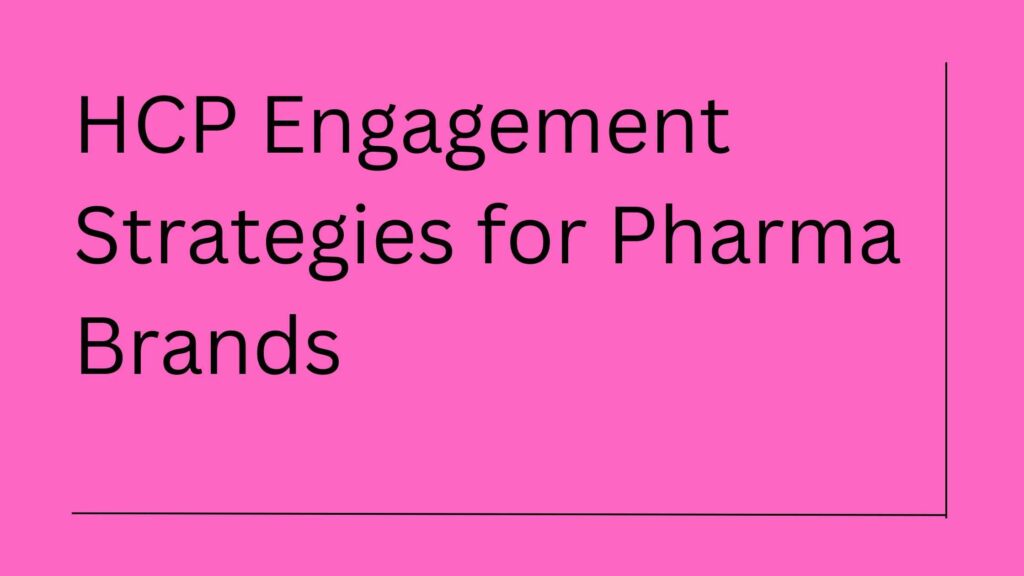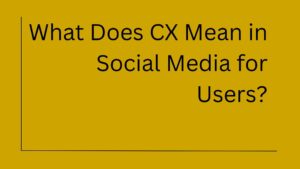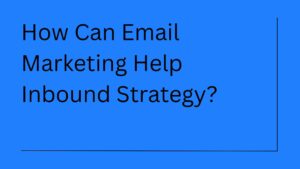Why is everyone who is into the pharma and part of healthcare keen about HCP Engagement Strategies? Let’s look deeper into the roots.
The healthcare marketing and medical communications space is highly competitive; how do you make your brand stand out? Targeting healthcare professionals (HCPs) and engaging in genuine conversations becomes tough when you have a horde of competitors vying for the same attention.
In such a scenario, it becomes crucial to understand your audience and speak their language if you want to develop meaningful healthcare communications. New technology and the digital revolution add to the complex puzzle of HCP marketing. The pharmaceutical industry faces unique challenges that other sectors don’t encounter, such as strict regulations, complex decision-making processes, long sales cycles, and the critical nature of the products being marketed.
Healthcare professionals are increasingly difficult to reach through traditional methods like ATL, BTL, or TTL. They’re busier than ever, more skeptical of promotional messages, and have access to vast amounts of information through digital channels. This shift requires pharmaceutical brands to fundamentally rethink their engagement strategies.
Let’s understand how to use HCP engagement strategies in the right way and work towards pharmaceutical brand building through proven strategies that respect HCPs’ time, provide genuine value, and build lasting relationships rather than just pushing products.
Understanding the HCP Engagement Challenge
Before diving into specific strategies, it’s important to recognize why HCP engagement has become so challenging in recent years.
Time Constraints
Healthcare professionals face immense time pressure. Between patient appointments, administrative duties, continuing education requirements, and personal responsibilities, they have limited bandwidth for engaging with pharmaceutical representatives or marketing materials. The average physician’s interaction with pharmaceutical sales representatives has decreased significantly over the past decade.
Information Overload
HCPs are bombarded with information from multiple sources pharmaceutical companies, medical journals, conferences, colleagues, and digital platforms. Standing out in this crowded landscape requires more than just louder messaging; it requires relevance and value.
Regulatory Complexity
Pharmaceutical marketing operates under strict regulatory frameworks that limit what can be said, how it can be said, and through which channels. These regulations exist to protect patients and ensure accurate medical information, but they also constrain marketing creativity and tactics.
Changing Preferences
Younger physicians especially prefer digital engagement over traditional face-to-face sales calls. They’re comfortable researching medications online, participating in virtual conferences, and connecting with peers through professional networks. Pharmaceutical brands must adapt to these evolving preferences.
HCP Marketing Strategies via Key Opinion Leaders (KOL) for Engagement
Anyone who has worked in pharmaceutical sales and marketing knows the key to conversions lies in the right KOLs. These are elite physicians or healthcare professionals who are medical experts in their respective domains. They are capable of influencing other doctors and professionals employed in medical services, which makes them crucial when you launch a new drug.
Key Opinion Leaders serve as trusted voices within the medical community. When a respected KOL endorses a treatment approach or speaks positively about a pharmaceutical product, other physicians pay attention. This peer influence often carries more weight than any amount of direct marketing from the pharmaceutical company itself.
Identifying the Right Pharma KOLs
Start by identifying the KOLs in your desired conditions and therapy areas. This process requires thorough research and strategic thinking. The right KOLs aren’t always the most prominent names; they’re the professionals who command genuine respect among their peers and have the ability to influence prescribing behaviors.
Consider multiple factors when identifying potential KOLs:
Clinical Expertise: Look for physicians with deep knowledge in specific therapeutic areas relevant to your products. Their clinical experience and outcomes should be demonstrable and respected within the medical community.
Research Contributions: KOLs who publish in peer-reviewed journals, present at major conferences, or contribute to clinical guidelines carry significant credibility. Their involvement in advancing medical knowledge positions them as thought leaders.
Peer Influence: The best KOLs are those whom other physicians actively seek out for advice and consultation. This informal influence network is often more powerful than formal credentials alone.
Digital Presence: In today’s connected world, consider KOLs who maintain active professional social media presence, participate in online medical communities, or contribute to medical education platforms. Their digital reach can amplify your message significantly.
Alignment with Brand Values: Ensure potential KOLs share values consistent with your brand positioning. Authenticity matters; forced partnerships appear disingenuous and can damage both the KOL’s credibility and your brand reputation.
Engaging KOLs Effectively
Then devise the right campaign that’s focused on education and engagement rather than pure promotion. KOLs respond better to opportunities that enhance their professional standing and contribute to medical advancement than to purely commercial arrangements.
Advisory Boards: Create advisory boards where KOLs provide genuine input on drug development, clinical trial design, or medical education initiatives. This collaboration provides mutual value you gain expert insights while KOLs influence important medical decisions.
Speaking Opportunities: Facilitate KOL participation in conferences, webinars, and educational events. These platforms allow them to share expertise while naturally incorporating discussion of relevant treatment options.
Research Collaborations: Support KOL-led research initiatives that advance understanding in therapeutic areas. This investment in medical knowledge builds goodwill and positions your brand as a partner in progress rather than just a product vendor.
Peer Education Programs: Enable KOLs to educate fellow physicians through structured programs. This peer-to-peer education model leverages the natural influence KOLs possess within professional networks.
Content Co-Creation: Collaborate with KOLs to develop educational materials, case studies, and clinical insights that benefit the broader medical community. This positions both the KOL and your brand as valuable educational resources.
Active HCP Engagement: Using the Right Content and Medium
Bombarding physicians with content that’s only promotional kills engagement. Instead, you need to offer meaningful content that adds value to their practice and builds goodwill. The shift from promotional to educational content represents a fundamental change in how pharmaceutical brands approach HCP marketing.
Creating Value-Driven Content
Healthcare professionals seek content that helps them provide better patient care, stay current with medical advances, solve clinical challenges, and improve practice efficiency. Content that delivers on these needs will be welcomed; content that merely promotes products will be ignored or resented.
Clinical Evidence and Data: Provide comprehensive information about clinical trial results, real-world evidence, safety profiles, and comparative effectiveness. HCPs make evidence-based decisions and appreciate access to detailed scientific information.
Case Studies: Share relevant case studies that demonstrate how products perform in real clinical settings. These practical examples help physicians understand how therapies might benefit their specific patient populations.
Educational Resources: Develop continuing medical education (CME) content that addresses therapeutic area challenges beyond just your products. This establishes your brand as a valuable educational resource rather than just a product promoter.
Patient Management Tools: Create resources that help physicians manage patients more effectively treatment algorithms, dosing guides, patient education materials, or symptom tracking tools. These practical resources get used repeatedly, keeping your brand present without being pushy.
Expert Insights: Curate and share insights from leading researchers and clinicians about emerging trends, evolving treatment paradigms, and clinical best practices. This positions your brand as a hub for valuable professional information.
Working with agencies that offer proficient medical writing services ensures content meets the high standards HCPs expect. Medical writing requires specialized expertise understanding complex scientific concepts, communicating clearly within regulatory constraints, and maintaining credibility with sophisticated audiences.
Choosing the Right Marketing Channels as Part of HCP Engagement Strategies
Deploying your content on the wrong medium can also result in a waste of time, effort, and funds. What you need to identify is the channel that works perfectly for your target audience. A competent agency can provide data and analytics to gain insights on which platform works best for doctors, KOLs, and patients.
Different HCP segments prefer different communication channels, and these preferences continue evolving as technology advances and generational shifts occur within the medical profession.
Email Marketing: Despite being one of the oldest digital channels, email marketing remains highly effective for HCP engagement strategies when done correctly. Segmented, personalized emails with genuinely valuable content achieve strong open and engagement rates. The key is relevance and respect for the recipient’s time.
Professional Social Media: Platforms like Doximity, Sermo, and specialized medical communities provide spaces where physicians naturally gather to discuss cases, share insights, and stay informed. Strategic presence in these communities allows brands to participate in existing conversations rather than interrupting with unwanted messages.
Webinars and Virtual Events: The shift to digital, accelerated by recent global events, has made webinars a preferred channel for many HCPs. They offer flexibility to participate from anywhere, the ability to access recorded content later, and opportunities for interactive Q&A with experts.
Medical Publications and Journals: Peer-reviewed publications remain the gold standard for establishing clinical credibility. While not purely marketing channels, strategic involvement in medical literature through sponsored supplements, educational inserts, or research support builds brand authority.
Mobile Applications: Physicians increasingly rely on mobile devices for clinical reference, patient management, and professional development. Well-designed apps that provide genuine utility can become indispensable tools that keep your brand present in daily practice.
In-Person Interactions: While digital channels have grown, face-to-face engagement still has value, particularly for complex products requiring detailed explanation or for building deep relationships with key accounts. The key is making these interactions valuable enough to justify the time investment HCPs must make.
Role of Digital Transformation in HCP Engagement Strategy
So, today, communicating with doctors becomes comfortable with the help of technology. For example, sales reps don’t need to wait for long periods in clinics to connect with doctors. They can share e-detailers in the form of product presentations, audio-visuals, podcasts, etc.
The digital transformation of pharmaceutical marketing has fundamentally changed how brands connect with healthcare professionals. This shift accelerated dramatically in recent years, making digital competency essential rather than optional.
E-Detailing and Virtual Engagement
Electronic detailing allows sales representatives to share rich multimedia content without requiring physical presence. These digital presentations can include:
- Interactive product information with embedded videos and animations
- Clinical data visualizations that make complex information accessible
- Patient case scenarios that demonstrate product application
- Real-time updates ensuring information remains current
- Analytics showing which content sections receive most attention
Virtual meetings via video conferencing platforms enable face-to-face interaction without geographic constraints or scheduling challenges. HCPs can engage from their offices between patients or from home during evening hours, making these interactions far more convenient than traditional sales calls.
Multichannel Marketing Approaches
Via multichannel marketing agencies and healthcare advertising agencies, pharmaceutical brands can reach out to KOLs on different mediums such as email, TV, radio, web, mobile and social networking platforms.
The key to successful multichannel marketing is integration and consistency. HCPs should encounter coherent messaging across all touchpoints, with each channel serving a specific purpose in the overall engagement strategy:
Email: Delivers targeted content directly to inboxes, ideal for sharing clinical updates, educational resources, or event invitations.
Web: Provides comprehensive information repositories where HCPs can deep-dive into clinical data, access resources, or engage with interactive tools at their convenience.
Mobile: Meets HCPs where they spend increasing amounts of time, providing quick access to information during patient consultations or while on the move.
Social Platforms: Enables ongoing conversations, community building, and real-time engagement around relevant topics.
Traditional Media: While digital dominates, selective use of traditional channels like medical journals, conferences, and broadcast media still reaches important HCP segments.
The sophistication comes from coordinating these channels so they work together synergistically. An HCP might first encounter your brand through a social media post, click through to your website for detailed information, sign up for email updates, and later attend a virtual event each interaction building on previous ones.
HCP Marketing Personalization and Data-Driven Engagement
Modern HCP marketing must move beyond one-size-fits-all approaches to deliver personalized experiences based on individual preferences, behaviors, and needs.
Behavioral Tracking: Understanding how individual HCPs interact with your content, which topics they engage with, when they’re most active, and which formats they prefer enables increasingly relevant communication.
Segmentation: Group HCPs based on specialization, prescribing patterns, practice settings, geographic location, digital behavior, or other relevant factors. Each segment receives tailored content and outreach.
Predictive Analytics: Advanced analytics can predict which HCPs are most likely to respond to specific messages, identify optimal contact timing, or flag opportunities for deeper engagement.
Dynamic Content: Create content that adapts based on the recipient, showing different clinical data to specialists versus primary care physicians, or highlighting different product attributes based on previous interactions.
The goal isn’t manipulation but relevance. When HCPs receive information specifically applicable to their practice and interests, engagement naturally increases.
Building Long-Term Pharma Relationships Benefits in Engagement Rate
Effective HCP engagement strategies aren’t about one-time transactions but about building sustained relationships built on trust, value, and mutual respect.
Consistency: Regular, predictable communication maintains presence without being intrusive. Establish cadences that HCPs can anticipate and rely on.
Responsiveness: When HCPs reach out with questions, requests, or concerns, rapid and helpful responses reinforce that you value the relationship beyond just sales.
Transparency: Be honest about product limitations, side effects, and appropriate use cases. HCPs appreciate candor and lose trust when they discover information was withheld.
Support Beyond Products: Provide value that extends beyond promoting your products, practice management insights, patient communication resources, reimbursement guidance, or connections to peer networks.
Feedback Integration: Actively solicit HCP feedback and demonstrate how it influences your strategies, product development, or support services. This shows genuine partnership rather than one-way communication.
Measuring HCP Engagement Success
Effective HCP engagement strategies require rigorous measurement to understand what’s working and continuously improve.
Engagement Metrics: Track email open rates, content downloads, webinar attendance, website visits, and social media interactions to gauge content resonance.
Relationship Depth: Monitor progression from awareness to consideration to advocacy. Are HCPs moving deeper into engagement over time?
Prescribing Behavior: While numerous factors influence prescribing, tracking prescription trends among engaged versus unengaged HCP segments provides the ultimate performance indication.
Quality of Interactions: Beyond quantity, assess interaction quality. Are conversations becoming more substantive, questions more sophisticated, and feedback more constructive?
Share of Voice: Compare your engagement levels to competitors to understand relative market position and identify opportunities.
Regular analysis of these metrics enables continuous optimization, ensuring resources focus on the most effective tactics and channels.
Conclusion
Successfully engaging healthcare professionals requires sophisticated strategies that respect their expertise, provide genuine value, and leverage modern technology while maintaining the human connections that build trust.
The most effective pharmaceutical brands recognize that HCP engagement isn’t about clever marketing tactics but about becoming a valued partner in the mission of improving patient care. This requires shifting from promotional mindsets to educational approaches, from interruption to invitation, and from transaction to relationship.
Key Opinion Leaders remain critical influencers, but engaging them effectively requires authentic collaboration rather than transactional arrangements. Content must provide real clinical value rather than just promotional messaging. Digital channels enable unprecedented reach and personalization, but success depends on deploying the right content through the right channels at the right times.
The pharmaceutical marketing landscape will continue evolving as technology advances, regulations adjust, and HCP preferences shift. Brands that commit to understanding their audiences deeply, providing consistently valuable engagement, and adapting strategies based on data and feedback will build the lasting relationships that drive sustainable success.
Building a strong pharmaceutical brand in today’s environment isn’t easy, but by focusing on genuine value creation, leveraging appropriate technology, and maintaining unwavering commitment to supporting healthcare professionals in their mission, pharmaceutical companies can cut through the noise and establish meaningful presence in this highly competitive space.






1 thought on “HCP Engagement Strategies: Marketing Tactics to Build a Pharma Brand”
Awesome blog! Do you have any tips and hints for aspiring writers who look to get into healthcare segment? I’m hoping to start my own site soon but I’m a little lost on everything. Would you advise starting with a free platform like WordPress or go for a paid option? There are so many choices out there that I’m totally confused .. Any ideas? Thanks a lot!